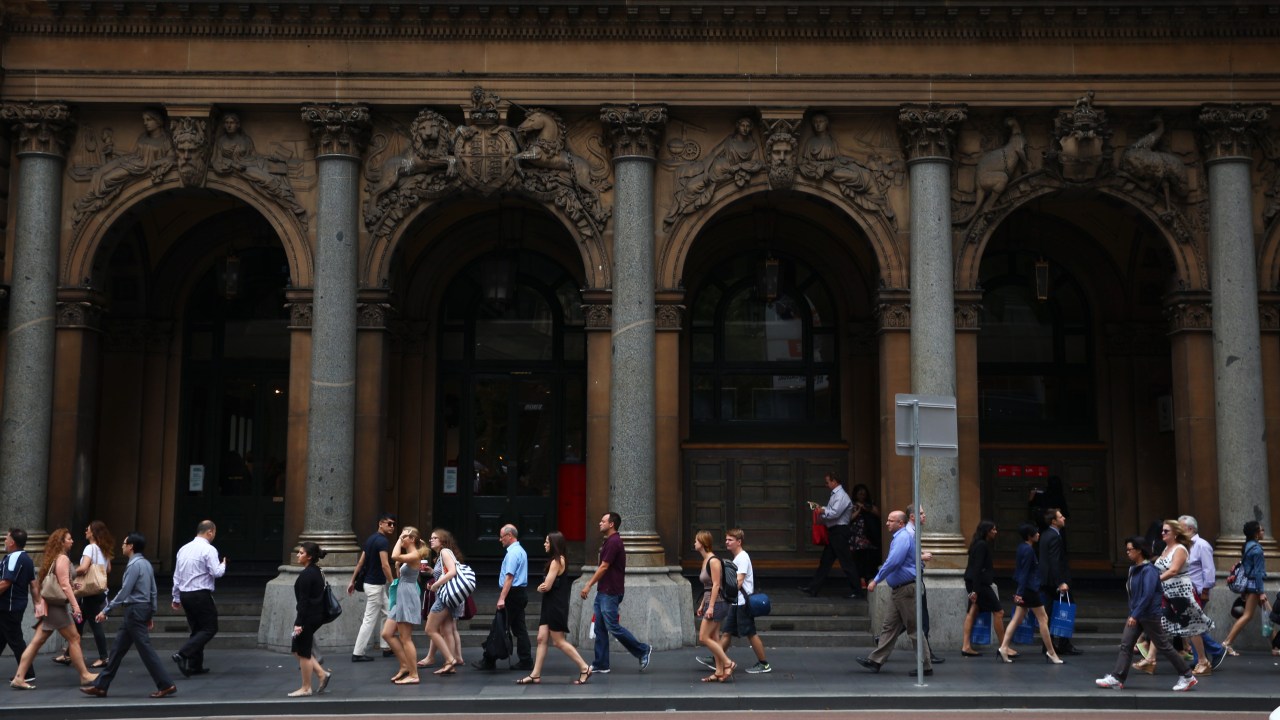Millions of Australians with mortgages will be bracing for the next rates decision, but a senior economist has issued a grave warning following the latest jobs figures, declaring the Reserve Bank is “very much on the edge”.
Sky News Business Editor Ross Greenwood says unemployment has fallen from 4.10 per cent in April to 4.0 per cent in May.
“Four per cent is the unemployment rate for May,” Mr Greenwood told Sky News Australia.
“So, as predicted, the unemployment rate has dropped down by 0.1 per cent, from April to May, down to four per cent.”
According to the Australian Bureau of Statistics, Australia added around 40,000 new jobs last month, with the number of those out of work also falling by 9,000.
As a result, the unemployment rate for May came in at four per cent, a 0.1 per cent fall from April, continuing the trend of strength in the labour market.
The unemployment rate for May came in at four per cent, a 0.1 per cent fall from April, continuing the trend of strength in the labour market. Picture: Australian Bureau of Statistics
Speaking to Sky News Australia’s Business Now after the data was released on Thursday, Mr Hogan argued policymakers should “be dancing a jig” over the figures, given the massive influx of migrants had failed to raise unemployment from near 50 year lows.
“There’s this narrative out there about this economy which I think is misguided and that is: this economy is operating at its capacity. It can’t generate a lot of real GDP,” he said.
“We look at what matters, and that is jobs and unemployment, and we are shooting the lights out.
Independent economist Warren Hogan has claimed Australia has demonstrated economic resilience “never seen before,” after the nation recorded strong employment numbers during May. Picture: Supplied
“We’ve just surged the population by almost a million in two years and we still have unemployment near 50-year lows.
“It’s a miraculous performance, and yes, I believe all policymakers should be dancing a jig at the great success of this nation.”
While the ABS estimates Australia still has about 600,000 unemployed people, that number is nearly 110,000 fewer than in March 2020 and both the employment-to-population ratio, 64.1 per cent, as well as the participation rate, 66.8 per cent, remain much higher than pre-pandemic levels.
George Washington University Economist Professor Steven Hamilton says the Reserve Bank will “do anything” to avoid an interest rate hike despite there being reason to.
Dr Hamilton’s comments follow the unemployment rate decline to four per cent in May.
“I think there was already a case for a hike,” Mr Hamilton told Sky News Australia.
“I think the RBA is going to do anything it possibly can to delay or avoid hiking again.
“I don’t think this piece of data pushes them to move.”
Thursday’s figures slightly bettered market expectations, which pencilled in a 30,000 increase in jobs, but are unlikely to alarm the RBA given it forecast the unemployment rate to sit at four per cent in June, before rising to 4.2 per cent by the end of the year.
However, Mr Hogan claimed the bank could nonetheless look to raise rates as soon as August if inflation, as measured by the Consumer Price Index, failed to fall over the current quarter.
“What the (RBA) board should be doing when they sit down six weeks from now, is saying ‘is the current level of the cash rate the right level to ensure that we either maintain price stability, which is normal, or at this juncture, get inflation down to target and then keep it there,” he explained.
Workers and tourists come back to Sydney’s central business district on George street after the shootings at the Lindt coffee shop in Sydney’s Martin Place. Sydney Australia. Tuesday 16th December 2014. Picture: Steve Christo/Corbis via Getty Images
“The strength of the employment numbers and of course, the higher than expected inflation we’ve been getting over the first four months of the year all suggest that that’s not the right level, 4.35 isn’t the right level.
“We know that they’re very, very much on the edge of this. So, I think they’re going to send a strong signal next week after these job figures that a rate rise is on the cards when they next meet in August.
“They just want to see the Q1, Q2, CPI in late July and I think if that comes in, and all the indicators are telling (us) it’s up around 0.9 or one per cent on core inflation, I think they’re going to have to go in August.”
Judo Bank Chief Economic Adviser Warren Hogan discusses the fall in unemployment from 4.1 per cent to 4.0 per cent.
“We have surged the population by almost a million in two years, and we still have unemployment near 50-year lows.”
“It is a miraculous performance, and yes, I believe that policymakers should be dancing a jig at the great success of this nation.”
Despite this, Mr Hogan acknowledged Thursday’s data also pointed to a gradual weakening in the labour market, with job openings declining and youth unemployment beginning to lift.
Underemployment, which measures the number of workers willing to work more hours than they do at present, also remained steady at 6.7 per cent in May, above the record low 5.8 per cent reached February last year.
Hours worked was also “soft,” Mr Hogan explained, suggesting this was another indicator labour productivity remained sluggish.

